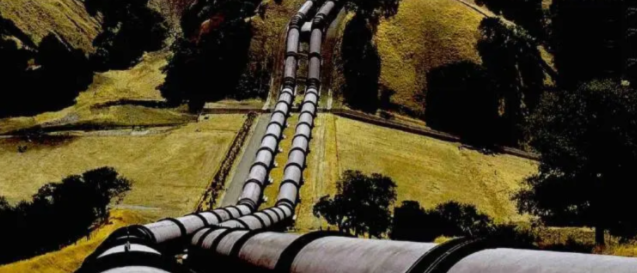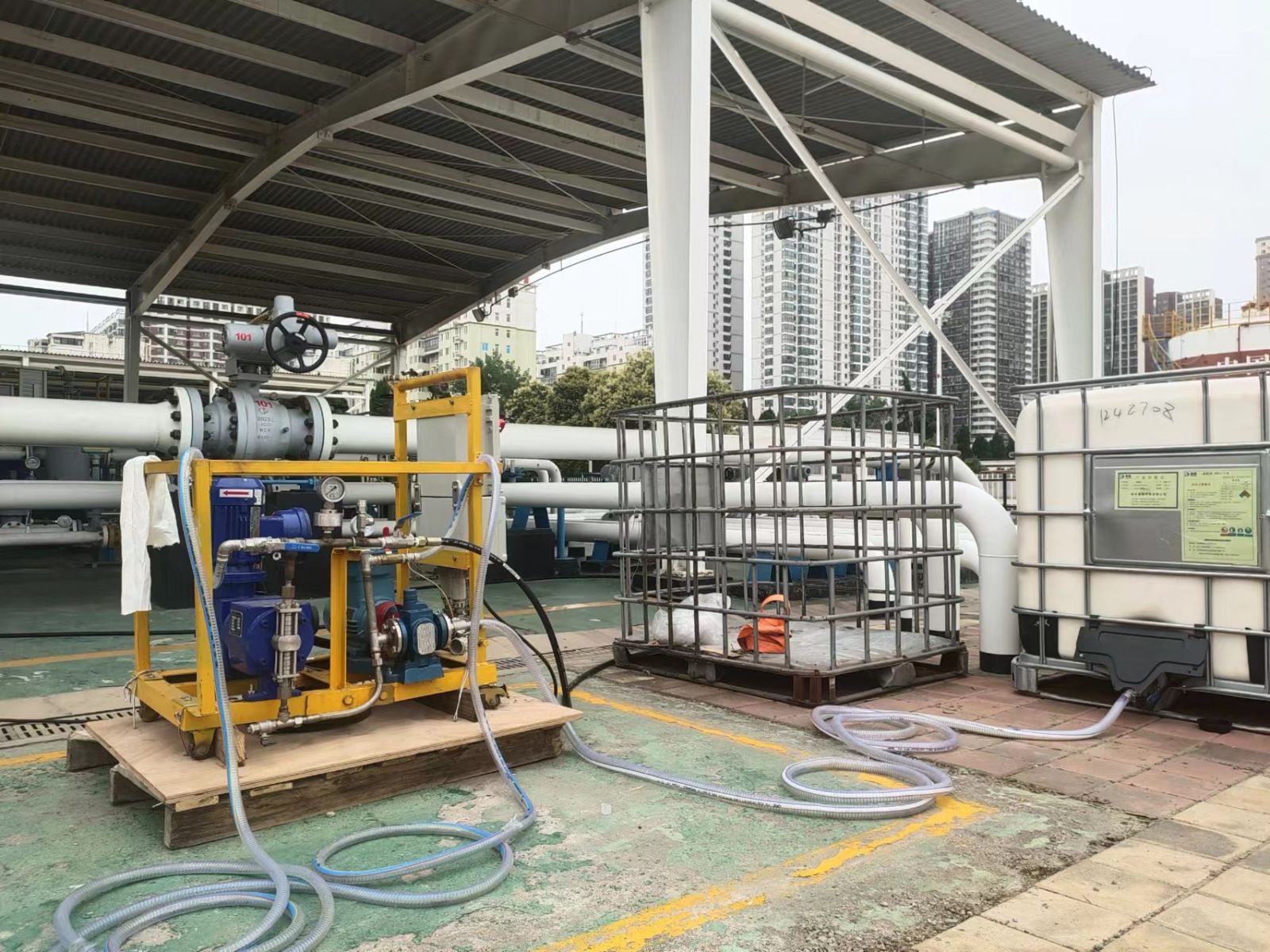Case Studies
Case Studies
- Construction of A New Organic-inorganic Composite Emulsion and Its Enhanced Mechanical Properties of Oil Well Cement(Part 1)
- Construction of A New Organic-inorganic Composite Emulsion and Its Enhanced Mechanical Properties of Oil Well Cement(Part 2)
- The Application Prospects of DeepSeek Large Model in Petroleum Engineering(Part 1)
- The Application Prospects of DeepSeek Large Model in Petroleum Engineering(Part 2)
- Development and Performance Evaluation of Efficient Asphalt Dispersant (Part 1)
- Development and Performance Evaluation of Efficient Asphalt Dispersant (Part 2)
- Development and Performance Evaluation of Efficient Asphalt Dispersant (Part 3)
- Research and Application Status of Drilling Fluid Plugging Materials (Part 1)
- Research and Application Status of Drilling Fluid Plugging Materials (Part 2)
- Research and Application Status of Drilling Fluid Plugging Materials (Part 3)


The Tieqin Line pipeline has been operating at low capacity in recent years, and a large number of metal corrosion defects have been discovered during pipeline inspection, which has become a high-risk factor for the Tieqin Line and seriously affects operational safety. Drag reducing agent is a polymer additive that can reduce fluid flow friction in pipelines and increase transportation capacity. It is mainly used in crude oil pipelines and is of great significance for increasing transportation, energy conservation, and improving economic benefits of pipelines. This article focuses on the mechanism of drag reducing agents and their application in high-risk pipelines.
The Tieqin Line has been in operation for nearly 40 years, with severe corrosion; Due to limitations in pipe and welding technology at that time, congenital defects in spiral and circumferential welds have become high-risk factors for the Tieqin Line, seriously affecting operational safety. In order to ensure the supply of national crude oil, the injection of drag reducing agents can increase the transportation volume of oil pipelines, reduce the frictional pressure drop along the pipeline, and thus make the pressure at each point along the pipeline significantly lower than the wall pressure at that point, achieving safe operation of the pipeline.
1.Introduction to Drag Reducing Agents
Drag reducing agents have the advantages of reducing the flow resistance of crude oil, increasing transportation volume, accelerating crude oil flow rate, and reducing energy consumption. The application of these chemical additives can reduce transportation costs, thereby maximizing benefits for crude oil pipeline operation. At the same time, it can further ensure the safety of crude oil pipeline transportation and ensure the timely completion of crude oil transportation plans.
(1) The functions and characteristics of drag reducing agents
Drag reducing agent is a polymer with viscoelasticity. After being injected into a pipeline, the drag reducing agent is dispersed in a continuous phase in the fluid. By relying on its unique viscoelasticity and the axial frictional shear stress of the boundary layer, the long chain of drag reducing agent molecules is stretched axially along the pipeline from a curled shape, and its molecules directly affect the movement of fluid molecules. The radial force from fluid molecules acts on the drag reducing agent molecules, causing them to twist and rotate. The gravitational force between drag reducing agent molecules resists the aforementioned forces and reacts with the fluid molecules, changing the direction and magnitude of the fluid molecules, converting a portion of the radial force into a clockwise axial force, resulting in a reduction in frictional resistance loss.
(2) Composition of drag reducing agent injection system
The proportion of additives added to oil pipelines usually does not exceed 30ppm (concentration value: 30mg/L). Due to the very low dosage and high injection pressure, a plunger metering pump is selected to provide power for the injection of drag reducing agents. The canned drag reducing agent is transported to the mixing tank for storage through a rubber hose by a feeding pump. After being evenly mixed in the mixing tank, the drag reducing agent enters the feeding gear pump through a suction hose line, providing pressure to the inlet of the metering pump to ensure its normal operation. At the same time, the feeding gear pump uses a reflux hose to reflux excess drag reducing agent back into the mixing tank. Inject drag reducing agent into the dosing point according to the set displacement and the required pressure of the oil pipeline after being pressurized by the metering pump. The injection point must be located downstream of the last outlet control valve on the outlet pipeline of the export pump.
(3) Precautions and inspections during the operation of drag reducing agents
During the storage process of drag reducing agents, it may cause "layering" phenomenon. It is necessary to circulate and stir the drag reducing agent before pouring it into the mixing tank. Tanks containing drag reducing agents should be placed in a cool and well ventilated place, avoiding long-term exposure to sunlight or contact with heat sources.
Stir the drag reducing agent stored in the mixing tank at a low rate every hour to improve its fluidity and avoid stratification. During the mixing process, the observation cover of the mixing tank must be firmly closed to prevent the drag reducing agent from overflowing.
If used outdoors, the mixing tank should be avoided from direct sunlight exposure to prevent the drag reducing agent on the inner side of the top cover and the tank wall from drying out. The observation cover of the mixing tank must be firmly closed to prevent sewage, debris, and hydrocarbon substances from entering the tank, and to reduce the exposure of the agent to air convection and product evaporation loss.
The pressure gauge reading at the outlet of the metering pump should be greater than or equal to the pressure of the crude oil export pipeline, and the pointer of the pressure gauge should swing regularly. The feeding pump has no serious dripping and the reflux is uniform. The swinging sound of the metering pump plunger is normal, and the mixing tank position drops uniformly.
2.The Use of Drag reducing Agents
Injecting only drag reducing agents can significantly reduce the flow friction resistance of oil products transported in pipelines without increasing pipeline equipment and power, and without changing pipeline operating conditions.
1).Increase pipeline throughput. For existing pipelines, their maximum throughput is limited. When it is not necessary to build another pipeline, using drag reducing agents to increase pipeline throughput is the best choice.
2). Ensure the safe operation of pipelines. Due to the influence of corrosive substances in soil and oil products, various types of corrosion will occur on the inner and outer surfaces of pipelines, such as pitting and thinning of pipe walls, which will reduce the pressure resistance of pipelines; After using drag reducing agents, the frictional pressure drop along the pipeline is reduced, so that the pressure at each point along the pipeline is significantly lower than the wall pressure at that point, achieving safe operation of the pipeline.
3.Application of Drag Reducing Agents in High-risk Pipelines
The Tieqin Line was built in the 1970s and has been in operation for about 40 years. At that time, there were many manufacturers, and the requirements for pipe making standards were relatively low. The level of pipe making was uneven, and the anti-corrosion and other aspects were at a relatively low level compared to now. The welding process and equipment were also relatively backward, which caused the inherent shortcomings of the Tieqin Line. Therefore, there are significant safety hazards in the transportation of Daqing oil through the existing old pipelines that have been in operation for 40 years and are inherently inadequate. The pressure resistance of pipelines has greatly decreased, and reducing pressure during operation can reduce some operational risks of the Tieqin Line. The best solution is to use drag reducing agents to reduce the working pressure of pipelines.
The drag reducing agent is applied between two high-risk pipelines at a distance of 60km, transporting Daqing crude oil.Before injecting drag reducing agent, the inlet pressure at the upstream station is 0.65MPa (inlet pressure set value is 0.30MPa), and the outlet pressure is 3.75MPa (pressure set value is 3.75MPa). The outlet pressure regulating valve is in the outlet pressure regulation position, with an opening of about 70%. The downstream station is in the tank receiving process, and the concentration value of drag reducing agent injection given by the superior dispatch is 30ppm (i.e. 30mg/L), with a flow rate of 1200m3/h and a drag reducing agent injection rate of 36L/h. The pipeline with added drag reducing agent gradually increased its throughput from 865m3/h to 1210m3/h within 16 hours. According to the increase rate formula, it was calculated that the injection of drag reducing agent between the two stations resulted in a pipeline increase rate of 39.9%. At the same time, the outlet pressure of the upstream station decreased from 3.75MPa to 3.40MPa, and the valve closure was adjusted to about 10%. This not only increased the oil delivery volume but also reduced the pressure of the oil pipeline, greatly ensuring the safety of pipeline transportation, reducing the operational risk of the oil pipeline, and achieving the effect of energy conservation and consumption reduction.
When using drag reducing agents, it is necessary to add them reasonably, which can not only reduce the pressure of the oil pipeline but also increase the transportation volume. The use of drag reducing agents as a short-term emergency measure has great advantages, but for pipelines that require long-term increase in transportation, the economic benefits are not significant due to the need for a large amount of drag reducing agents. In addition, the addition of drag reducing agent injection devices in the oil transportation system has increased the operating volume and failure rate of the entire system, which is not conducive to daily operation management. Therefore, the technology of drag reducing agents should be given priority consideration, and blind adherence to application should not be allowed.
4.Conclusion
The drag reducing agent has the characteristics of simple and effective process. The main purpose of adding drag reducing agent is to reduce the pressure at various points along the pipeline, ensure the safe operation of the pipeline, increase the pipeline throughput, and increase the economic and social benefits of pipeline operation. It is also possible to increase the pipeline capacity without equipment expansion after reaching its maximum capacity, which has significant economic benefits.



